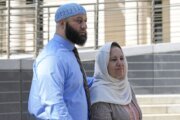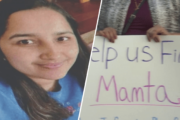The rescue from Gaza of hostage Qaid Farhan Alkadi, who belongs to the Bedouin community in Israel, has put the focus on a minority group that has largely existed on the margins of Israeli society and has had a complicated relationship with the government.
Here’s a look at the community and some related issues.
What is the Bedouin minority in Israel?
The Bedouin community is part of the Arab minority in Israel. The larger Arab community in Israel, also known as Palestinian citizens of Israel, make up some 20% of the country’s population. They have citizenship, but the traditionally nomadic Bedouin community is particularly impoverished and has suffered from neglect and marginalization.
It has long been embroiled in land disputes with the Israeli authorities that loom large over the lives of many of its members and that have, at times, boiled over into legal battles and demonstrations.
This group’s heartland in the country is in the Negev Desert in southern Israel.
How has the Israel-Hamas war affected the community?
The rescued hostage was one of several Bedouins abducted on Oct. 7. He was working as a guard at a packing factory in Kibbutz Magen, one of several farming communities that came under attack. The Bedouin community also suffered casualties, with a number of members killed on Oct. 7.
Hamas-led militants abducted some 250 people during their attack in Israel in which some 1,200 people were killed. Israel’s military response has killed more than 40,000 Palestinians, according to Gaza health officials, and has displaced 90% of Gaza’s population from their homes and caused heavy destruction across the territory.
On Oct. 7, some Bedouins rushed to help attendees of an Israeli music festival, helping save lives.
The war has continued to take a toll.
Many Bedouin community members don’t have “protected spaces and they’re in the range of the missiles attacks,” targeting Israel, said Sarah Abu-Kaf, a community member and a Ben-Gurion University of the Negev associate professor focused on mental health among the Arab community in Israel.
“On the other side, they have family members in Gaza and they are exposed to the suffering of people in Gaza,” she said.
What are some of the issues affecting the Bedouin minority in Israel?
There are several. One significant long-running source of tensions is that tens of thousands or so Bedouins in the Negev eke out an existence in villages that the Israeli authorities don’t recognize. The villages are largely cut off from basic services and the government wants to tear them down. These include the small village of the rescued hostage, much of which is targeted for demolition.
Israel has sought to relocate the Bedouins to established towns, saying that would allow the state to provide modern services and improve their quality of life. Many community members view such efforts as a way of pushing them out and uprooting them from their ancestral lands, disrupting their traditional way of life.
In 1948, on the eve of the establishment of Israel, about 65,000 to 100,000 Arab Bedouins lived in the Negev, according to the Negev Coexistence Forum for Civil Equality, an Arab-Jewish rights organization that also tracks demolitions in the Bedouin community. At the end of the 1948 war, only 11,000 from the community remained in the Negev, while most fled or were expelled, including to Jordan and Egypt, it said.
“You can’t put the Bedouin in a community where they don’t have the ability to survive,” said Wahid Alhoziil, the director of a forum for Bedouin civilian victims of Oct. 7. “The government needs to see the Arab sector as an inseparable part of daily life and give them space to express themselves, to invest in education, in jobs, in housing, not just to destroy without offering solutions,” added Alhoziil, a former lieutenant colonel in the Israeli military.
Besides the unrecognized villages, other community members have been living in governmental planned townships or villages that eventually became recognized.
Overall, even beyond the unrecognized villages, there are many unmet needs for the community and a gap between Bedouin and Jewish communities that should be bridged through government investments in such things as education and job creation, said Alean Al-Krenawi, a professor of social work at the Ben-Gurion University of the Negev, and a community member.
___
Associated Press writer Josef Federman contributed.
___
Associated Press religion coverage receives support through the AP’s collaboration with The Conversation US, with funding from Lilly Endowment Inc. The AP is solely responsible for this content.
Copyright © 2024 The Associated Press. All rights reserved. This material may not be published, broadcast, written or redistributed.







